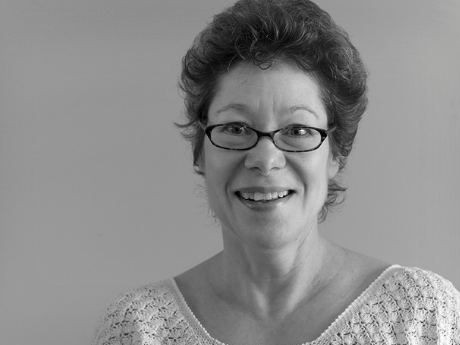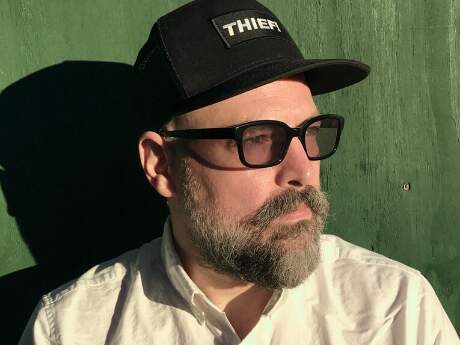Interviews
Poems Argue with One Another: Interview with Natasha Sajé

Poet Natasha Sajé has been living in Salt Lake City since the late nineties. The author of three books of poetry, she has written numerous essays on a wide range of subjects including food, books, travels, and marriage. Her most recent collection is Vivarium (Tupelo, 2014). Also published in 2014 is her book of essays Windows and Doors: A Poet Reads Literary Theory from the University of Michigan Press. A professor of English at Westminster College, Sajé is one of the faculty members of the low-residency program at Vermont College of Fine Arts. In this interview, she discusses about her writing and passion for baking, as well as life in Utah and abroad.
***
Fiona Sze-Lorrain: You were born in Munich in 1955. Do you think cultural influences from Europe play a vital role in your writing life? Not to imply any stereotypical generalization—do you feel attached or drawn to German culture and sensibilities?
Natasha Sajé: Even though I think in English now, my European birth, parents and travels have helped make me who I am, and I sought out those connections by living in France, Germany, and Switzerland after college, as well as spending a semester in Slovenia on a Fulbright. One never loses the sense of being a refugee, I think—which involves, simultaneously, gratitude for the new home country and an ability to see it (including its flaws) from the outside. Perhaps the "doubleness" made me a writer; I know that tends to be true for others, too.
These days, it's not easy for me to read German, although I still speak it. I've maintained an ease with French, perhaps because of the cognates, or the syntax. Each country has its charms and quirks; once, in Stuttgart, when I was attempting to cross a street against the light, another pedestrian reached out an arm to stop me, despite the fact that there was no traffic. That wouldn't happen in France, or the U.S. of course.
Fiona Sze-Lorrain: When it comes to poetic form in your work—especially your most recent two collections Bend and Vivarium—what a variety of both the formal and the experimental. Would you like to say something about your poetic "voice"?
Natasha Sajé: My first connection to poetry came through the sound and through figurative language. I love metaphor and metonymy! I really didn't understand form until I started teaching it—after my first book was published. Today, I believe that all poets are formalists, language poets and conceptual poets—it's just a matter of degree. For me, the degree has intensified in all three categories—I like to see how far I can push them, and still make out of them a satisfying art object.
Fiona Sze-Lorrain: To borrow your own words, what's your Achilles heel?
Natasha Sajé: It's my desire to have things neat and tied up, to control them, to have a rhetorical purpose, to know what I'm doing and why.
The process of writing a poem is antithetical to knowing what its outcome and purpose is.
Fiona Sze-Lorrain: What kind of poetry or aesthetics appeals to you?
Natasha Sajé: I love reading all kinds of poetry—and dislike the idea of poetic camps. Some contemporary poets whose work I admire: Heather McHugh, Frank Bidart, Evie Shockley, Paul Muldoon, Kamau Brathwaite, D.A. Powell, Mary Syzbist, Charles Simic, Kevin McFadden, Mark Yakich, Anne Carson, Durs Grunbein, Carl Phillips, Caroline Bergvall, Wanda Coleman, Robert Hass, Wislawa Szymborska, Erin Moure, William Olsen—I could go on and on.
I love a poem that I have to reread in order to figure out how it works, a poem that haunts me in some way.
Fiona Sze-Lorrain: Any specific example?
Natasha Sajé: I'd say C.D. Wright's small book of love poems, Tremble, was a revelation for me. It helped me understand that form can be part of content, and the ways in which other literary forms can be appropriated by poetry. Her prose poem "In Gardening" was the inspiration for my poem, "Song of the Cook." As it turned out, you wouldn't notice the parentage—my poem is in distinct lines—so I didn't include an epigraph or note.
Tremble is out of print, although some of the poems are included in Wright's Selected Poems. Let me rant a bit: there's not much correlation between the quality of a book and whether it gets reviewed, gets prizes, or sells.
Fiona Sze-Lorrain: Have you ever felt let down by a new book from a poet or writer whose earlier work you admire?
Natasha Sajé: I'm excited when writers keep reinventing themselves and their work; conversely, when they repeat a formula from a previous book, that's disappointing. It's also possible to publish too much—a book a year, for example—and then the formula inevitably kicks in because it takes so much effort to reinvent one's work.
Fiona Sze-Lorrain: Your book of critical prose from Windows and Doors: A Poet Reads Literary Theory was out the same year as Vivarium. How do you switch gears from poetry to critical writing, and vice versa?
Natasha Sajé: The book was spurred by a question asked of me during an MLA job interview: does my Ph.D. make any difference in the way I teach creative writing?
At the time, I didn't have a good answer, but the book is an extended answer. Yes, it does make a difference, a philosophical one. I can see why the author is dead, and still work to craft poems! Seriously, I enjoy reading well-written theory as much as I enjoy reading anything else.
Critical writing requires a clear argument. In some ways this is easier for me because the process is always the same: read a lot, see what's been said, say something new, and siphon that argument through examples. It's laborious, but it's predictable.
Fiona Sze-Lorrain: What've you been working on since Windows and Doors and Vivarium?
Natasha Sajé: I have a manuscript of personal essays, currently titled Terroir: Essays on Otherness, that I've been working on for about eight years. One, "The Performance of Taste," is available online at the North American Review; another will be in the Fall issue of the Missouri Review.
I'm about a year away from having a new manuscript of poems. Many of these use white space instead of punctuation, because punctuation seemed, in the words of W.S. Merwin, like "nailing words on paper."
palliative
from pallium
the cloak that covers the body on its way to burial
a cloth of comfort
comfort once meant strong and now
means soft and easeful
as in morphine and mouth sponges
as in care
as in acquiring at the end
the cloak
from clocca bell-shaped
as when the world was quieter
and the sound of a bell
could ring in an afterlife
I'd like to begin anticipating
my body as a sponge
filled and wrung out again and again
by pain and the will to live
palliative not from pale
as in beyond the
staked vines on a fence dividing
governable from wild
known from unknown
(first published in Green Linden Press)
Fiona Sze-Lorrain: What makes writing difficult these days?
Natasha Sajé: Only time. My teaching and administrative responsibilities are heavy, and I'm conscientious about them.
Fiona Sze-Lorrain: How has the academia informed your artistic progress?
Natasha Sajé: I admit it, I'm institutionalized, I'm a house cat. Perhaps it's related to my previous answer about needing things tied up, about needing a framework through which to understand things. On the other hand, I love academia—it's not the ivory tower, it's a piece of the real world and one where I feel at home. I thank the Ph.D. program at the University of Maryland for that—for teaching me the rules, and helping me appreciate rather than chafe against them.
I love research and I love teaching, especially the students in the Vermont College MFA in Writing Program. They are grateful to learn, and I am grateful to teach them because I in turn have learned so much from them.
Fiona Sze-Lorrain: Learning from your students at Vermont?
Natasha Sajé: Yes . . . Part of their work is writing critical essays on writers that interest them, and some of these writers are new to me. Sometimes my students' work causes me to reassess a particular writer, or to think about the literary landscape in a new way. The questions that arise in our correspondence are the ones that I try to answer in my essays on poetry.
And their work is often exciting—most of them are mature people who have had rich lives, and their work reflects their experiences. It's gratifying as well to see how quickly they improve. For instance, if someone has already learned how to do surgery, practice law or teach elementary school, that way of learning can be applied more easily to the writing of poetry.
They often have very disciplined work habits. It's a great joy to see them succeed in writing as they have in another realm.
Fiona Sze-Lorrain: Tell us more about your life outside the academia. You've had different "lives" in different parts of the world . . .
Natasha Sajé: In-between the years in higher education, I've had many other jobs, either office or food service.
I love(d) working as a waitress, which I did off and on between the age of 22 and 40-something, first in the Swiss ski resort of Grindelwald. (The essay forthcoming in the Missouri Review describes that winter season of 1978.) I also worked as a secretary for Daimler Benz, and much later, for the Sterling Silversmith Guild of America, where I also wrote some promotional materials. That was a sweet irony, because since the age of five, I've always loved silver. I had an American babysitter-surrogate grandmother who let me use and polish her silver. When she died and left me $300, I was 18, and wanted to buy a service for 12 of Chantilly, but my mother talked me out of it—no18-year-old needs sterling silver flatware, she said. Anyway, I developed something we called a "pattern personality test" to help brides choose their sterling pattern, and went to bridal shows with 128 sample forks!
It was working as a waitress, at the Washington Hilton, that I met my husband, who was a chef. He was born in Jamaica, but grew up in London. He had landed in the U.S. when the British Merchant Navy switched to container shipping, and he grew bored with the short port residencies that entailed. Looking back over our 30 years together, we had cooked, and eaten, a lot of great meals together. I love the way how each of us could take the most honest criticism—was hungry for it, in fact. That's the only you get better at anything, if you're not willing to settle for merely an "OK".
My specialty is baking, particularly cakes. I make European style cakes and pastries, but give them a new twist in terms of ingredients. For example, I make a version of Cassata Siliciana, which is a dessert found all over Sicily. In Sicily, it consists of sponge cake filled with ricotta cheese flavored with candied fruit and chocolate, covered with marzipan and then glazed with fondant. I candy my own citrus rind, using Meyer lemons, Buddha's Hand, tangerines and grapefruit, using as little sugar as possible. And I make my own marzipan, flavoring it with powdered green tea, which cuts the sweetness and adds a beautiful color. (That's an idea I took from Rose Levy Beranbaum, whose Cake Bible is a wonderful book!) I also omit the fondant which is pure sugar.
I'm also working on recipes with context for a cookbook of my own—one with only healthful recipes, probably focused on baking. As an example, I use stevia powder instead of sugar as often as possible. Stevia is made from a plant whose leaves taste sweet that grows in the rain forest. It doesn't raise one's blood sugar because it merely tastes sweet. The Brazilian Indians have used it forever.
Fiona Sze-Lorrain: Speaking of food, do you often read food writing? What are your favorite cookbooks?
Natasha Sajé: I bought Chad Robertson's Tartine3, and have been on a tear with sourdough bread and "ancient" flours. I also like Yottam Ottolenghi's books, particularly Plenty More, which focuses on vegetable dishes. My wife Laura is vegetarian and I tend to eat vegetarian more often than not. I often learn from the America's Test Kitchen website, for instance the fact that the potassium from a potato makes a yeast dough rise better.
Fiona Sze-Lorrain: Back to your latest collection Vivarium, which is an abecedarius . . .
Natasha Sajé: It was so much fun to write!
Fiona Sze-Lorrain: It's fun to read it, too!
Natasha Sajé: As with my second book I was pushing myself to write poems I didn't know how to write, learning to make them as I went, a process both pleasurable and difficult. The alphabet was my spur, particularly etymologies and words I was (initially) unfamiliar with. For instance, a poem spurred by "Y" uses the word "ytterbium," a metal mined in Sweden, to become an elegy for a steelworker friend who died young. The letter "O" prompts a lyric on the U.S. dependence on imported oil; "R" is a rebus which includes symbols and drawings as well as words; "V" a meditation on veritas; Š (a letter from Slovenian) tries to convey the spirit of that country; "X" uses the story of two thieves crucified alongside Jesus Christ . . . Each poem demands ancillary reading from me as the search for words leads to a search for an understanding of history, science, philosophy, and linguistics.
I use groups of poems spurred by the same letter to create additional tension. For example, one of the "P" poems is a pantoum, while another is a prose poem questioning the link between the etymology of "peculiar" (L, pecu, cattle) and "the peculiar institution" of slavery in the U.S. Aural repetitions appear differently in each poem; for instance, in "F," the first word of each line starts with "F," and in "G," words with "g" are at the ends of lines.
To give the reader relief from alliteration, some of the poems only suggest words beginning with that letter. For example, in "Z" each of the lines offers an image of a word beginning with "z." Some of the poems take on a more traditional abecedarian form, each line beginning with a sequential letter of the alphabet—but with a difference: the line also ends with a word beginning with that letter. Should all this formal play seem rather tricky, I must say that each poem also has to cost me something emotionally, like a self-discovery.
Within the alphabet framework, I was finding it fun to allow the poems to argue with one another, as it were. My goal was for the reader to be surprised by each poem, as well as by the movement from poem to poem, yet also constructing the manuscript well.
Fiona Sze-Lorrain: Allowing the poems to argue with one another?
Natasha Sajé: Well, if one poem is in a traditional form, the next poem can "undo" that form. Or, in terms of content, the first poem in the manuscript is titled "Anathema" which is my divorce from religion of any kind. Something no doubt spurred by living in Utah for twenty years, where the state and the state religion of Mormonism are not separated. But the very last poem in the book, "Z", is a poem that explores God and spirituality. Religion has very little to do with God, although the two are often confused. That's what I mean by "poems that argue with one another."
Fiona Sze-Lorrain: You've lived in Salt Lake City for twenty years now . . . To what extent has Utah made its way into your work?
Natasha Sajé: In addition to the "dominant religion," Utah's majestic landscape, dry climate, and terrible pollution (caused by vehicles and industries and the fact that the valley is ringed by mountain ranges) appear in many poems and essays. I'm obsessed with cheatgrass and myrtle spurge, nonindigenous invasive weeds. I think a lot about citizenship and what it means to vote and have a say in government. Because of gerrymandering, every Utah U.S. congressperson and senator is Republican—this despite the fact that Salt Lake City itself is quite liberal. I'm stunned to realize I've lived in Salt Lake City longer than anywhere else, and I've gotten used to the ease of life here. The cost of living is low, it's easy to get around, and we have a great airport. Of course, I have also made many dear friends here and my poetry critique group has very direct influence on my work.
More Interviews
To Keep It All from Vanishing: An Interview with Timothy Donnelly
As for form, I’ve always been interested in patterning of all kinds, probably for a lot of reasons. I can’t account for every one of them, but on a primal level, underneath them all, as far as poems go, I’ve always felt that poetry’s ancient emphasis on the physical properties of language, and the use of certain of these properties (such as quantity or syllable count or stress) as leading principles in its composition, is what most distinguishes poetry from other kinds of writing, and what makes it most palpable, most present.
Read Article

